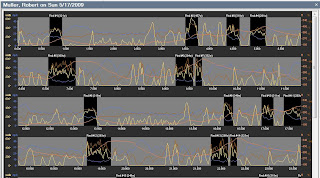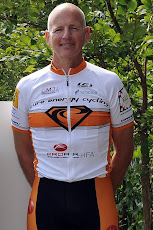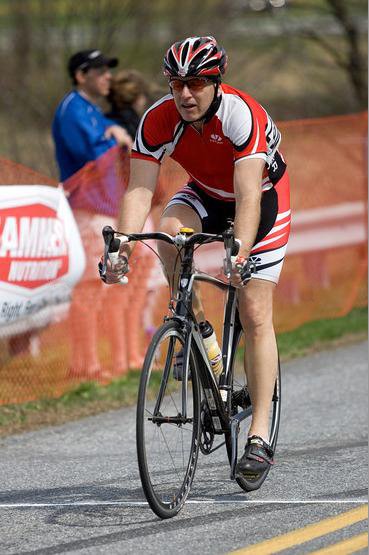
I just read a cycling book with an article entitled "Slow Hill Climber?". I thought it was particularly relevant to me since I just got done racing a hilly race in Lancaster County PA and riding in Lake Placid NY with TWiley Sports. I think everyone is aware that if you want to ride fast in the hills or climb well it's imperative you have a high Power to Weight Ratio (w/kg). You can achieve a high w/kg in one of two ways, either: a. increase the watts or power (numerator) or b. decrease your weight kg (denominator). Ideally, you'd want to do both. But, barring going out and buying a ridiculously light carbon bike weighting 15 lbs. (that is also ridiculously expensive), I think MORE people would see better (long term) results if they shed some of that excess baggage off their OWN hips/butt/legs/stomach. I have, and I've seen the results. In 2003 I weighed 223 lbs..and I had a hard time climbing my driveway (my driveway is almost flat). Since then, I've dropped 50 lbs. and I can tell you without reservation that it made all of the difference in my climbing. I'm still NOT a great climber but I can hold my own. Ok, if you've done the math, you know that I'm down to 173 lbs. now. Do you know how much BETTER a climber I'd be at 168 lbs.? MUCH better I assure you..and to prove it to you..I'm going to get down to 168 lbs. (by July 4th) and I'll do a before and after hill climb test for you to prove it to you. Just like the power to overcome aerodynamic drag increases exponentially with speed..I honestly believe that your hill climbing will improve exponentially once you get down to your target weight.
The important thing to remember when dropping/losing weight is NOT to lose it any faster than 1-2 pounds per week. If you do that, you'll end up losing muscle mass along with the fat. That's the muscle mass you worked so hard to build-up over the winter months in the gym. Therefore, the best way to do it (lose weight) is to increase your activity level each day by burning 500 calories over and beyond your normal caloric intake/burn rate. If you burn 500 calories per day times 7 days a week (over and beyond what you normally do), that's 3500 calories which equals 1 pound. You do that for 5 weeks and you'll lose 5 lbs. Trust me..it works! Remember, I lost 50 lbs. but what I didn't tell you is how I lost it. I lost it the hard way (over a year's time), through exercise and eating healthy. Anybody can lose weight..you just stop eating. Don't believe me, stop eating for a week and get on the scale. I GUARANTEE you will lose weight. It aint rocket science. You don't eat, you lose weight. So, before you think about going on a hunger strike..I don't recommend NOT eating. What I do recommend is burning calories through exercise. I recommend burning these calories the first thing in the a.m. on an empty stomach...BEFORE breakfast. Just pick a pace on the bike, or elliptical trainer, treadmill (or whatever) where you're burning 500 calories per hour. It's a pretty spirited pace by the way...but you can do it. BTW, don't go over 1 hour in the a.m. on an empty stomach or your body just might want to switch from burning fat to protein (muscle mass).
If anyone wants to try this with me..send me an email and let me know how you're doing with it. It's not as easy as it sounds. After all, you're going to have to get up an hour early in the a.m. to get this workout in. Plus, your body isn't stupid..it's going to see that you're burning more calories than normal and will probably make you hungrier during the day. Don't be tempted to eat any more than normal. Resist! Just eat what you normally eat during the day...and don't skip your normal workouts either...because you're tired. That's the other thing your body will want to do to you..when it knows it's burning more than normal...shut you down so you conserve fuel/energy/weight...so resist..drink some caffeine..stay awake!
You can do it with me...try it!
b
Oh, btw, who is that "slow climber" behind Rick Fesler in the photo? Is that my friend Todd Wiley in the distance? (haha Just kidding.) For the record, Rick Fesler is THE BEST hill climber I have ever seen, and he's a Triathlete. That means if he were a cyclist only, he'd probably be even stronger. The man is just an incredible machine who never seems to tire. I'd love to see him in either the Whiteface Mtn or Mt. Washington annual hill climb race. I'd bet a top 10 finish. Speaking of top 10 finishes. Rick was the top amateur athlete in the recent Columbia Triathlon in May...with a top 10 finish...beating some Professionals. Kudos to Rick!









